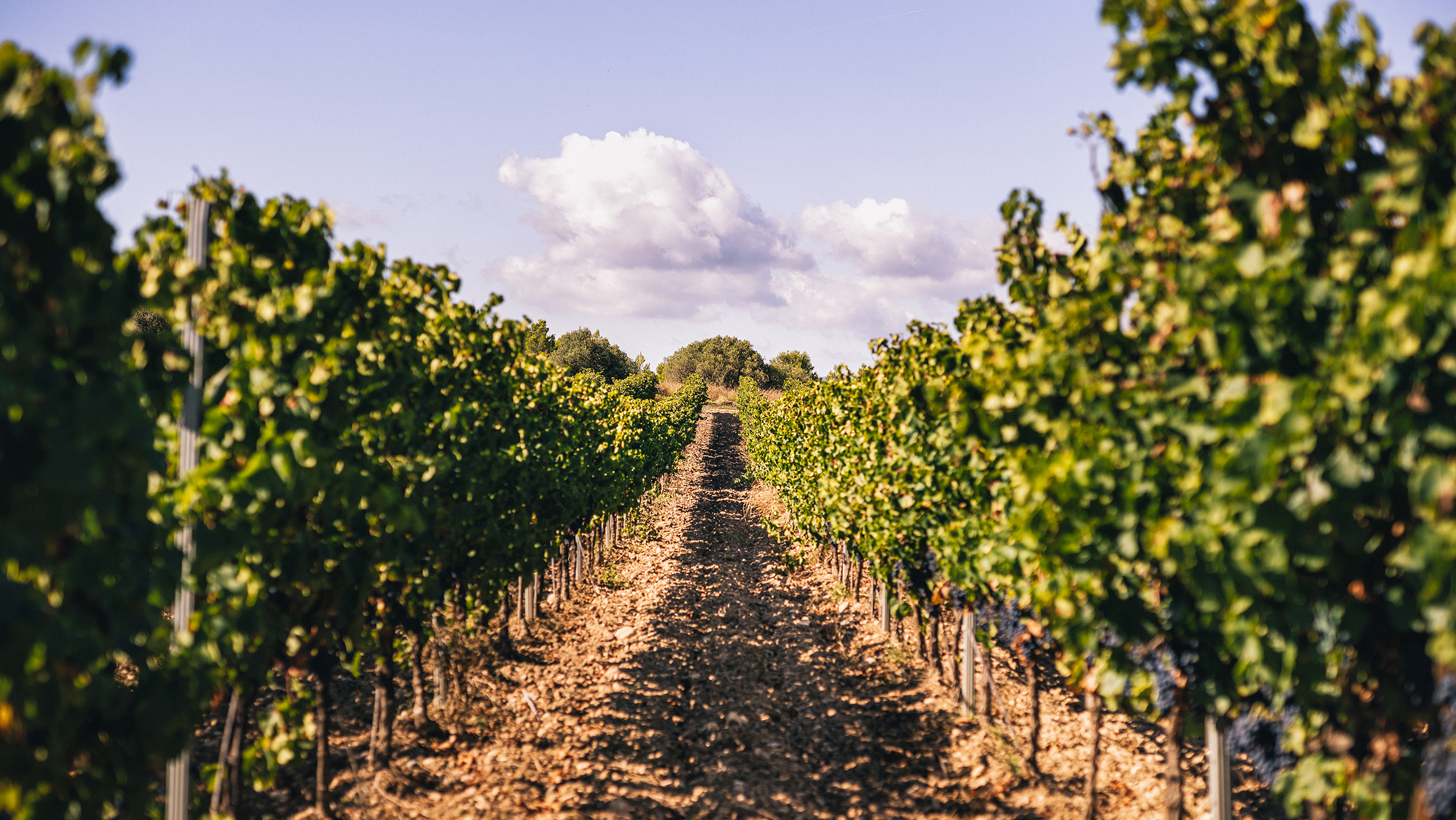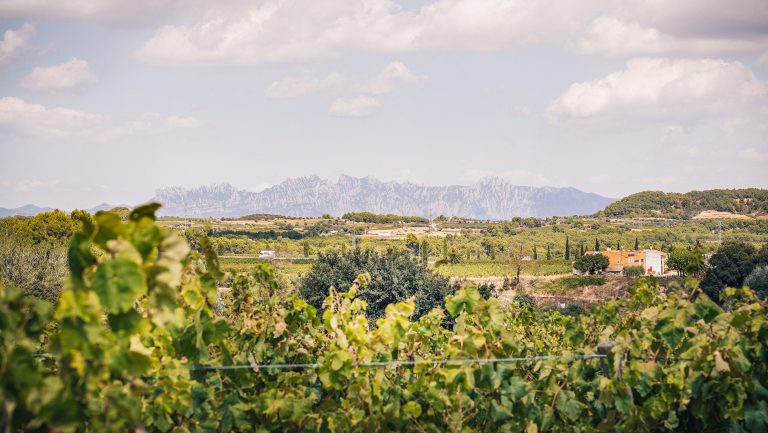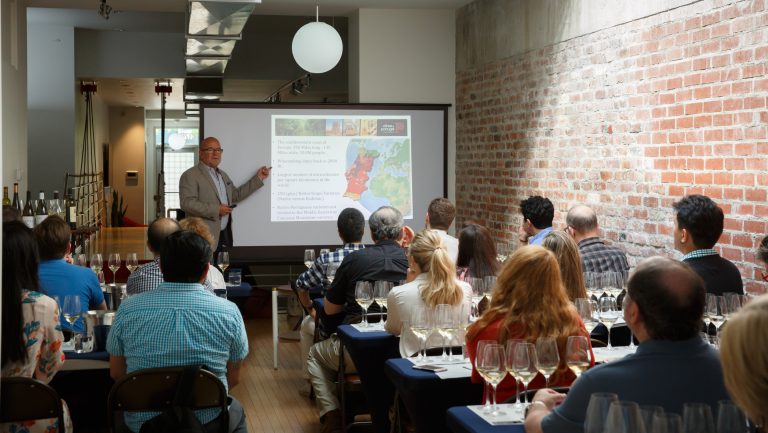This advertising content was produced in collaboration with our partner, D.O. Cava.
At a moment of widespread greenwashing in the wine world, when it’s all too common for brands and organizations alike to pay lip service to sustainability without implementing actual change, D.O. Cava is taking concrete steps toward solving the myriad problems the industry faces today.
This much has been apparent since April 2021, when D.O. Cava announced a series of sweeping regulation changes concerning the production of Cava de Guarda Superior. The highest quality tier for Cava wines, this elite category includes the specific designations of Cava Reserva (with a minimum of 18 months of bottle aging), Gran Reserva (aged at least 30 months), and Cavas de Paraje Calificado (Cavas sourced from specific single-vineyard plots and aged a minimum of 36 months).
According to the new regulations, which the denomination described as “the most exacting standards in the world for quality D.O. sparkling wines made using the strict traditional method,” all grapes destined for the Guarda Superior designation must be hand-harvested from vineyards with a minimum of 10 years of age. In addition to strictly limiting yields (to a maximum of 4.9 tons per acre), changing aging requirements, and requiring vintage and disgorgement dates for all Guarda Superior wines, D.O. Cava also requires estates to comply with strict traceability audits from harvest to bottle. It would save its most radical update for last, however, declaring a commitment to convert all Cava de Guarda Superior to 100 percent organic by 2025.

Don’t miss the latest drinks industry news and insights. Sign up for our award-winning newsletters and get insider intel, resources, and trends delivered to your inbox every week.
To the region’s faithful legions of growers and producers, this watershed decision aligns with a wider effort to strengthen Cava’s qualitative foundations while ensuring a more sustainable future for the territory where world-class traditional method wines have been crafted for more than a century. Today, estates both large and small are busy putting plans in place to adapt to this ambitious new mandate.
D.O. Cava Leads the Charge Toward Organic Viticulture
Such a massive paradigm shift cannot help but invite questions and bring a certain set of challenges. With the 2025 deadline quickly approaching, what are the implications for the style and quality of Cava, as well as its long-term growth and distribution? And how will overcoming the short-term hurdles involved in reaching this milestone help to ensure the enduring success of Spain’s most famous and historically celebrated sparkling wine?
As extraordinary as D.O. Cava’s decision might seem, in many ways it represents the natural extension—and official formalization—of an evolution that had already been brewing for quite some time. Over recent years, the denomination has staked its claim as a global pioneer of organic viticulture. According to its 2022 Global Report, the annual number of bottles of Cava labeled as organic has grown by more than 40 percent compared to 2021.
To Javier Pagés, the president of D.O. Cava, this transformation will only accelerate as Cava continues to lead the push toward more resilient forms of agriculture. “D.O. Cava is evolving,” he says. “The number of bottles of organic Cava produced has now reached 13,780,711 units, 34.09 percent of which corresponds to premium organic Cava.”
Highlighting D.O. Cava’s considerable effort in promoting organic production, Pagés stresses that “both the consumer and the market are demanding it.” Ultimately, however, he views this evolution as being driven by deeper currents than market forces alone; he believes it amounts to an act of conservation for the territory itself. As he puts it, “This care and preservation of the territory is something with which we identify closely.”

An Investment in the Future of the Region—and the Wine
The Catalonian region of Penedès—Cava’s historical heart of production, responsible for creating the vast majority of D.O. Cava’s wine—has been endowed with a specific set of climate conditions that make it ideally suited for the pursuit of organic viticulture. “The Penedès area is favorable due to its Mediterranean climate, suitable soil types, and diverse topography,” says David Aura, the export manager at the historic Cava Mestres in the village of Sant Sadurní d’Anoia. “The region’s relatively low disease pressure and sufficient sunlight support the growth of healthy vines with fewer chemical interventions.”
Despite these natural advantages, the exacting standards the D.O. established to track compliance, requiring estates to trace every step of the production process from vineyard to bottle, still presents a challenge for some winemakers. “The process is extremely difficult to manage if you’re not used to it,” says Marta Casas, a winemaker and co-owner at Parés Baltà, the pioneering organic estate that first gained certification in 2003 before converting to biodynamic in 2013. “Even for us it has been a significant challenge, and we’ve been farming organically since 2003.”
To producers of Cava de Guarda Superior, however, the end results more than compensate for all the hard work. For one, by promoting the health, integrity, and diversity of the vineyard, their efforts will preserve the land for future generations. Moreover, as keepers of D.O. Cava’s vision, their work takes a critical step toward defining Cava both as a world-class sparkling wine and a unique expression of place.
“It’s a big change in terms of the mentality of the producers, but in the end it will present us with an equally big reward,” says Casas. “I’m talking about quality. These changes will allow us to demonstrate to the consumer that our Cava comes from a very specific part of the world, and that each step of the process is controlled and verified from the very beginning.”
A Reinvigorated Market for Premium Cava
At this stage, it’s still too early to predict how these major shifts at the level of production will impact the sales and distribution of Cava’s top wines in the global market. Buyers and consumers alike can expect what Aura calls “the introduction of a dynamic dimension to production and distribution.”
He notes, “pricing in the market might reflect the additional effort and cost associated with organic farming.” Any such realignment, however, would simply represent a fair-market adjustment, helping to “position Cava de Guarda Superior as a premium product that aligns with consumer preferences for sustainable and high-quality wines.”
To Maite Esteves, a partner and the manager of Vins El Cep, another pioneer of organic sparkling wine in Comtats de Barcelona, the revolutionary changes taking place within Cava’s top tier ultimately promise to reinvigorate the category as a whole. “The most important thing is that all this means a change for the entire sector and that it serves to improve the positioning of Cava,” she says. “The future of Cava depends on increasing its value so that the entire chain is strong and committed to quality.”
As this evolution continues to unfold, D.O. Cava has reached a pivotal turning point. While it’s impossible to see into the future, one thing’s for certain: We don’t need to wait until 2025 to taste the results. Armed with a new story to tell about itself and the passionate artisans who make it, the denomination’s highly anticipated transformation is already underway.

Dispatch
Sign up for our award-winning newsletter
Don’t miss the latest drinks industry news and insights—delivered to your inbox every week.









